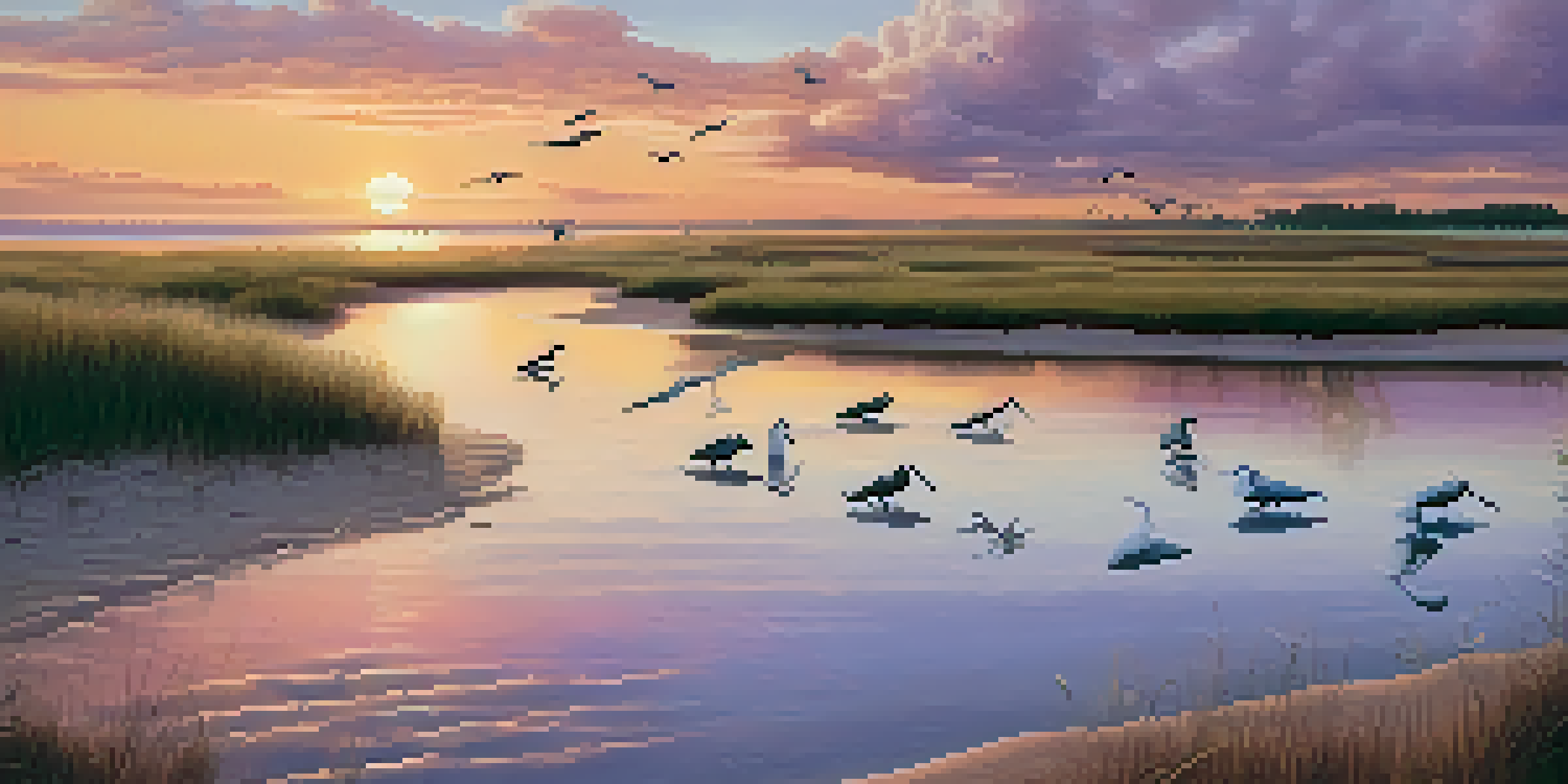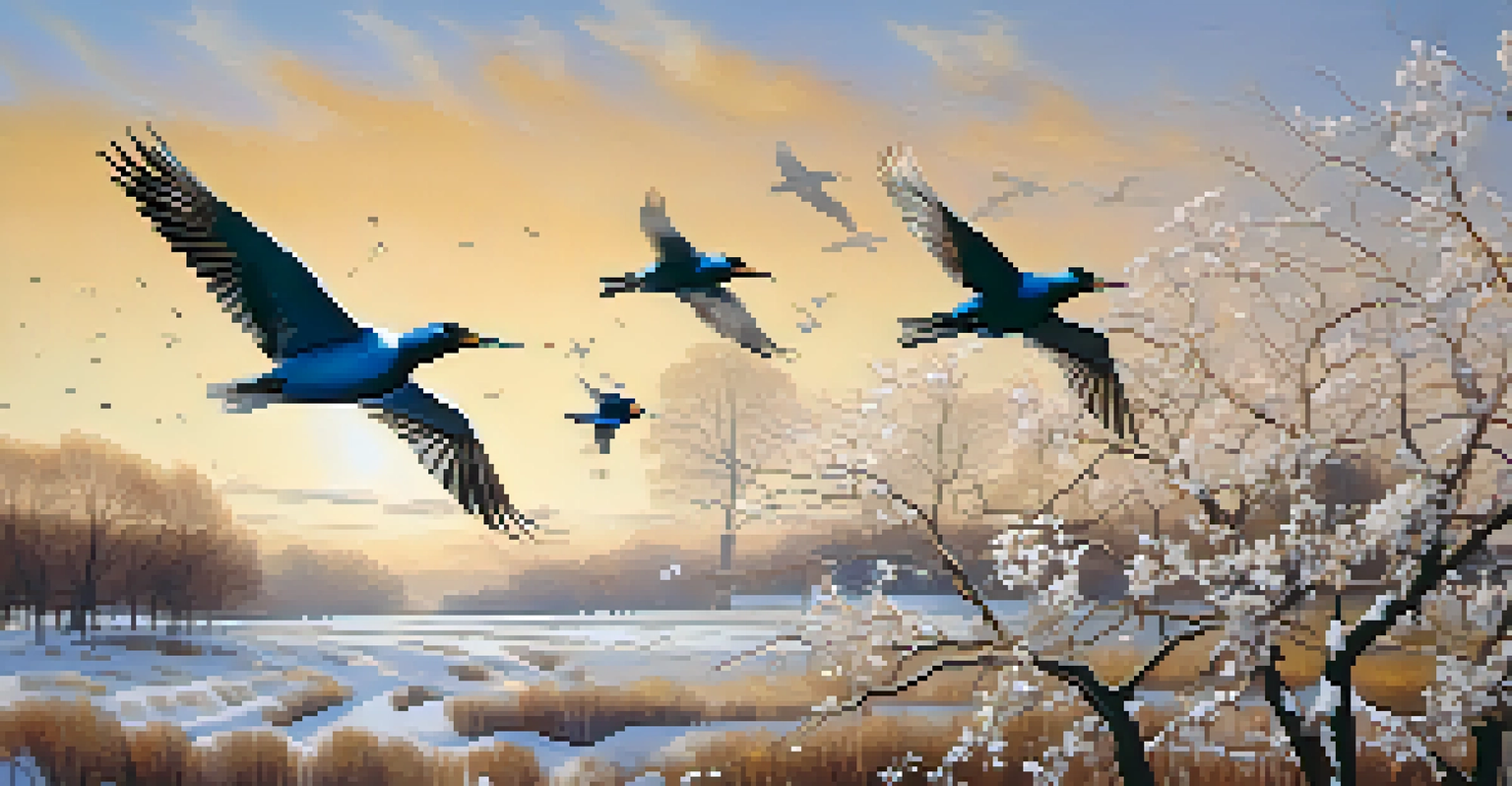Climate Change and Its Effects on New York's Ecosystems

Understanding Climate Change and Its Local Impact
Climate change refers to long-term shifts in temperatures and weather patterns, primarily driven by human activities. In New York, these changes are becoming increasingly evident, affecting everything from precipitation patterns to seasonal temperatures. As a coastal state, New York is especially vulnerable to rising sea levels and extreme weather events brought about by climate change.
The climate crisis is not a political issue, it is a moral and existential one that we all must address together.
To visualize this, imagine a snowman in March that melts away faster than usual. This is similar to how our local ecosystems struggle to adapt to the rapid changes brought on by climate fluctuations. Species that once thrived in specific conditions may find themselves out of their comfort zones, leading to shifts in biodiversity.
Understanding these impacts is critical, as it forms the foundation for protecting the state's rich ecosystems. By recognizing the tangible effects of climate change, we can better appreciate the urgency of addressing this global issue at a local level.
Rising Sea Levels and Coastal Ecosystems
One of the most alarming impacts of climate change in New York is rising sea levels. The melting polar ice caps and glaciers contribute to this phenomenon, threatening coastal ecosystems like wetlands and estuaries. These areas serve as vital habitats for countless species and act as natural buffers against storm surges.

Imagine standing on a beach and watching the tide come in—now picture that tide rising higher year after year. Coastal communities and ecosystems are facing increased flooding, which can lead to habitat loss and greater vulnerability to storms. The delicate balance that supports diverse marine life is being disrupted.
Rising Sea Levels Threaten Coasts
Melting polar ice caps are causing sea levels to rise, jeopardizing coastal ecosystems and communities in New York.
Protecting these coastal areas is essential not just for wildlife but also for communities that rely on them for economic activities like fishing and tourism. By addressing rising sea levels, we can safeguard both our natural heritage and local economies.
Changing Weather Patterns Affecting Biodiversity
Climate change is altering weather patterns, leading to unpredictable seasons that can disrupt the life cycles of many species in New York. For example, warmer winters may cause plants to bloom earlier, affecting the timing of animal migrations and breeding seasons. This mismatch can have cascading effects on local ecosystems.
We won’t have a society if we destroy the environment.
Think of it like a beautifully choreographed dance that suddenly loses its rhythm. When species depend on each other for survival, even small shifts in timing can lead to significant challenges. Pollinators, such as bees, may emerge too early, missing the flowers they rely on for food.
Preserving biodiversity is crucial, as healthy ecosystems are more resilient to change. By fostering a deeper understanding of how climate affects these interdependent relationships, we can take action to protect them.
Impact on Freshwater Ecosystems and Resources
Freshwater resources in New York, including lakes, rivers, and streams, are also experiencing the effects of climate change. Increased temperatures can lead to warmer waters, which may disrupt aquatic ecosystems and threaten fish populations. Species like trout, which prefer cooler waters, may struggle to survive.
Picture a river flowing with warm water, where fish once thrived, but now find it increasingly difficult to adapt. This shift not only affects wildlife but also impacts recreational activities like fishing and boating, which are integral to many communities. As ecosystems change, so too do the opportunities for local economies.
Climate Change Disrupts Wildlife
Shifts in weather patterns are altering species migration and breeding behaviors, potentially leading to ecological imbalances.
Maintaining the health of these freshwater ecosystems is essential for both wildlife and human communities. By implementing sustainable practices and monitoring water quality, we can help mitigate the impacts of climate change.
Urban Heat Islands and Their Effects
In urban areas like New York City, climate change exacerbates the urban heat island effect, where cities become significantly warmer than their rural surroundings. This increase in temperature can affect local flora and fauna, pushing some species out while allowing others to thrive. The concrete jungle can create a challenging environment for many living organisms.
Imagine stepping out of a shaded park into the sweltering heat of a city street. This stark contrast can lead to stress for plants and animals that are not adapted to such extremes. Additionally, higher temperatures can worsen air quality, creating health hazards for residents.
Addressing urban heat islands involves creating green spaces, planting trees, and using reflective materials in construction. These simple changes can help mitigate heat and foster healthier urban ecosystems.
Shifts in Wildlife Migration and Behavior
As climate change alters habitats, many animals are changing their migration patterns and behaviors to adapt. Birds, for instance, may arrive at their breeding grounds earlier or later than usual, potentially leading to mismatches with food availability. This can disrupt their breeding success and overall population health.
Consider a flock of migratory birds that rely on specific environmental cues to guide their journey. If these cues change due to shifting climates, their journey could become perilous. The interconnectedness of wildlife and their habitats means that any disruption can affect entire ecosystems.
Community Action Against Climate Impact
Local initiatives like tree planting and wetland restoration demonstrate how communities can effectively combat climate change.
To support wildlife adaptation, conservation efforts must be tailored to these changing patterns. By monitoring species movements and protecting critical habitats, we can help wildlife navigate the challenges posed by climate change.
Community Efforts to Combat Climate Change
Communities across New York are taking proactive steps to combat the effects of climate change on local ecosystems. Initiatives range from tree planting programs to wetland restoration projects, all aimed at enhancing resilience against climate impacts. These grassroots efforts demonstrate the power of collective action in addressing environmental challenges.
Think of it as a neighborhood coming together to plant a community garden. Each small effort contributes to a larger goal of fostering a healthier environment. Local organizations and citizens play a crucial role in advocating for policies that protect ecosystems and promote sustainability.

By participating in community efforts, individuals not only contribute to ecological health but also foster a sense of stewardship for the environment. Together, these actions can create lasting change and inspire future generations to prioritize ecological conservation.
The Path Forward: Adapting to Change
As climate change continues to evolve, adapting to its effects on New York's ecosystems is essential. This involves not only mitigating damage but also creating strategies to support resilience in both natural and human systems. Collaboration among government agencies, scientists, and local communities will be vital to ensure a sustainable future.
Think of adaptation as a dance—learning to move with the rhythm of change rather than resisting it. By investing in research and implementing adaptive management strategies, we can better protect our ecosystems and the services they provide.
Ultimately, the health of New York's ecosystems is intertwined with the well-being of its residents. By embracing change and working together, we can foster a more resilient environment that benefits both nature and our communities.